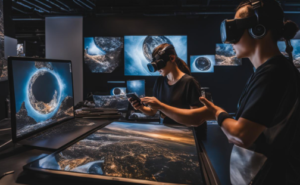
Photographical Technological Innovations
From its early 19th-century beginnings, photography has evolved a great distance. Technological developments have changed how we photograph, edit, and distribute photographs with every decade that passes. The several developments in photography technology will be discussed in this article together with their effects on amateur and professional photographers as well as future possibilities.
The Development of Photography : A Synopsis
Understanding the foundations of photography is crucial before delving into contemporary inventions. Using heliography, Joseph Nicéphore Niépce produced the first permanent picture in 1826. This signalled the start of a new artistic medium that would change drastically with time.
Early Days From Film to Digital
Among the most important developments in late 20th century was the shift from film to digital photography. Conventional film cameras needed chemical processing, which may be expensive and time-consuming. Digital cameras offer instant picture capture and review, so making photography more accessible.
The Evolution of Digital Photography
Digital photos transformed the field. It let photographers capture an infinite amount of pictures without worrying about running out of film. Let’s examine some important developments in the field of digital photography closer-up.
Image sensors : the core of digital cameras
Every digital camera is fundamentally based on the image sensor. These sensors first were somewhat tiny and low in resolution. Higher resolutions and better low-light capabilities, however, are results of sensor technology’s developments.
Full-Frame Against APS-C Sensors
Full-frame and APS-C sensors are sometimes hotly contested among photographers. Professionals would find full-frame sensors perfect since they record more light and detail. APS-C sensors are smaller and more reasonably priced, hence they are a common choice for novices.
Mirrorless cameras : The path of photography forward
A game-changer in recent years are mirrorless cameras. Mirrorless cameras are smaller and lighter than conventional DSLRs, which reflect light using mirrors. Without sacrificing image quality, this invention has made photography more portable.
Mirrorless Camera Benefits
Mirrorless cameras usually have better autofocus systems, which helps to catch quickly moving objects.
These cameras help photographers to view the exact exposure and impacts of settings in real-time, therefore improving the shooting experience.
Smartphone Images: A Novel Age
Like nothing else, smartphones have democratized photography. Anyone can capture amazing pictures with high-quality cameras included into mobile devices.
The Effect of Mobile Images
Social media sharing has surged thanks in part to the ease with which one may capture smartphone images. For amateur photographers, sites like Instagram and TikHub have evolved into venues where they could get recognition and network with others.

Innovations Following Processing:
Although photographing has grown simpler, editing photographs has also witnessed major developments. Let’s review some of the main post-processing technological advancements.
From Foundation to Advanced Editing Software
From simple tools to advanced tools able to improve or totally change an image, photo editing software has developed from basic programs.
Adobe Photoshop and Lighting Room
With capabilities for both beginner and professional photographers, Adobe continues to be a pioneer in picture editing applications. While Photoshop gives sophisticated retouching and editing tools, Lightroom has an easy interface for photo organization and editing.
Editing with Artificial Intelligence
Photo editing programs are including artificial intelligence technologies more and more. This invention makes backdrop removals, automatic enhancements, even subject recognition possible. Photographs can thus get professional-looking adjustments in a fraction of the time.
The Function of Drones in Visual Journalism
For photographers, drones have created an other world of opportunities. They enable aerial views heretofore difficult or impossible to record.
Aerial photography catches original viewpoints.
Photographers using drones can snap breathtaking cityscapes and landscapes from unusual perspectives. This has especially grown rather popular in events, travel, and real estate.
Legal Concerns
Although drones present interesting possibilities, they also carry legal rules. Local rules on drone use should be known to photographers to help them to avoid fines or penalties.
The Development of Print Technology
Photography still depends critically on printing, even in the digital era. Printing technology’s innovations have made producing high-quality prints simpler.
Dye-Sublimation Printing vs. Inkjet Printing
Home printing has always favored inkjet printers, while for professional photographers dye-sublimation printers provide better quality. Usually, the intended usage of the prints determines the choice between the two.
3D printing: An additional dimension.
One developing trend that lets photographers produce actual copies of their photos is 3D printing. Though still in its early years, this technology has great creative expression potential.
The Development of Photographural Technology
The direction of photography seems bright as long as technology keeps developing. Let’s discuss some possible developments just ahead.
Virtual Reality and Enhanced Vision
Combining augmented reality (AR) with virtual reality (VR) in photography could alter our experience of photographs. Imagine seeing a picture in a three-dimensional space or layering digital data on an actual scene.
Improved connectivity: Internet of Things
Smart cameras built on the Internet of Things (IoT) may automatically upload photographs to the cloud, perform changes, and perhaps post them on social media. This would simplify the whole shooting procedure, hence increasing accessibility of photography.
In essence, embracing innovation in photography means that this field of study is developing at amazing speed. From the advent of digital cameras to the influence of cellphones and drones, these developments have changed our means of recording and distributing events. It is very evident from looking ahead that there are countless opportunities.
Whether you are a novice photographer or an experienced expert, adopting these technical developments will boost your imagination and enable you to use photographs to convey your story. The realm of photography is more fascinating than it has ever been as we stand on the brink of greater inventions.
While keeping a user-friendly structure and SEO-friendly approach, this page presents an overview of the important developments in photographic technology. Every part is meant to captivate readers and offer insightful analysis of the changing scene of photography.